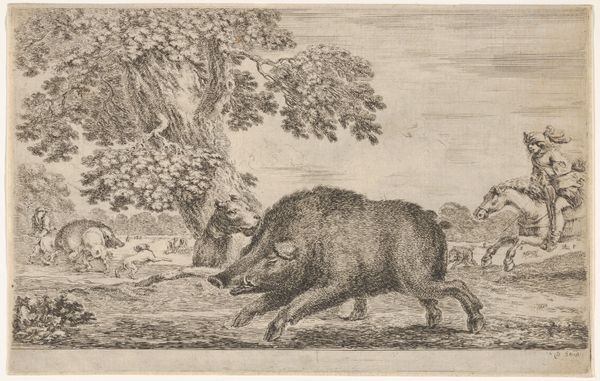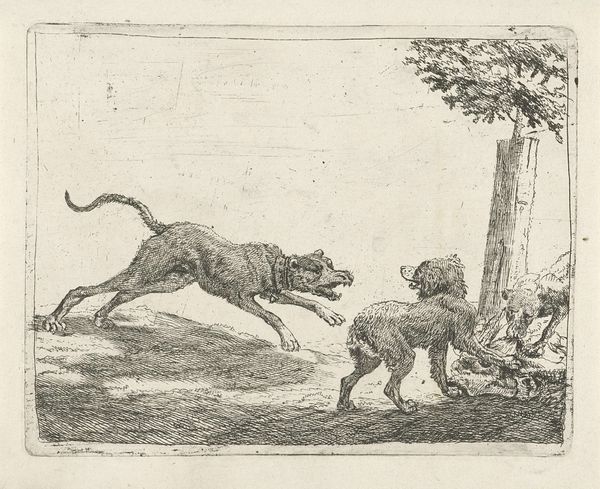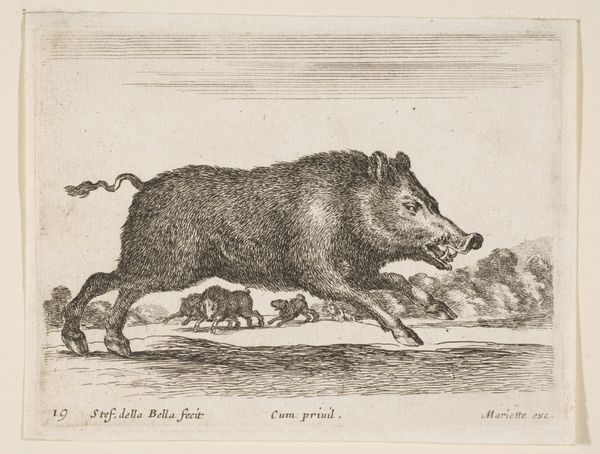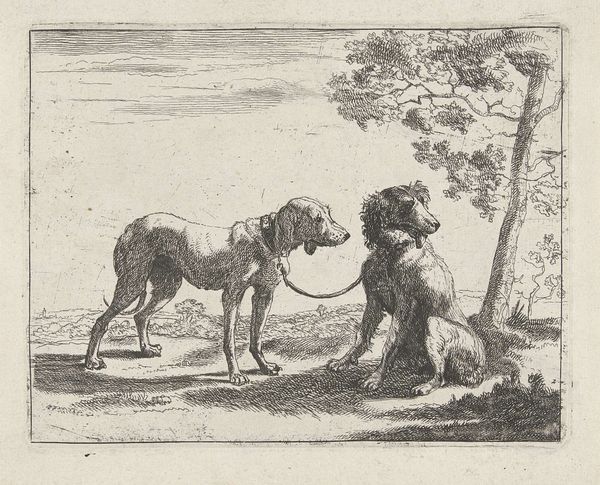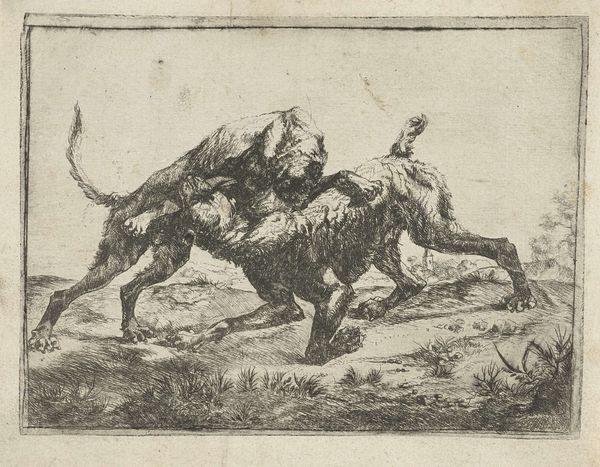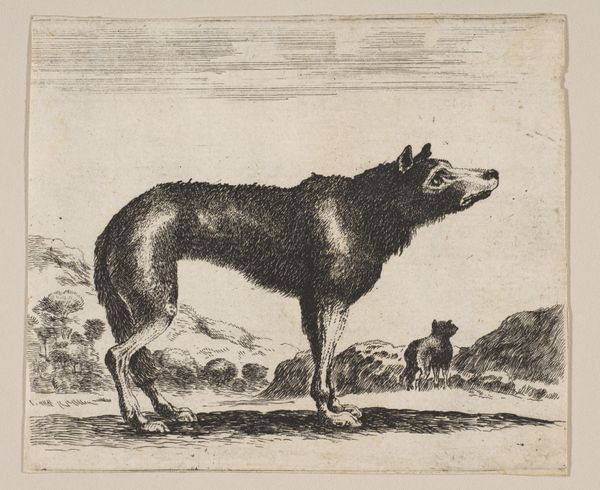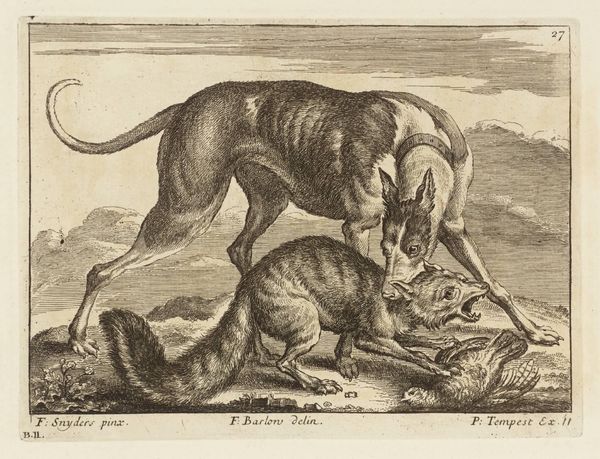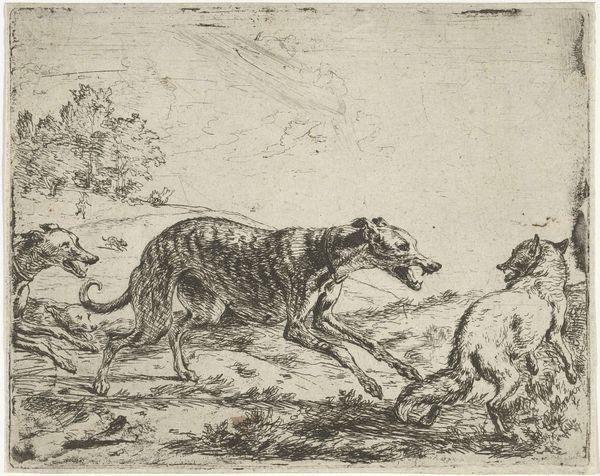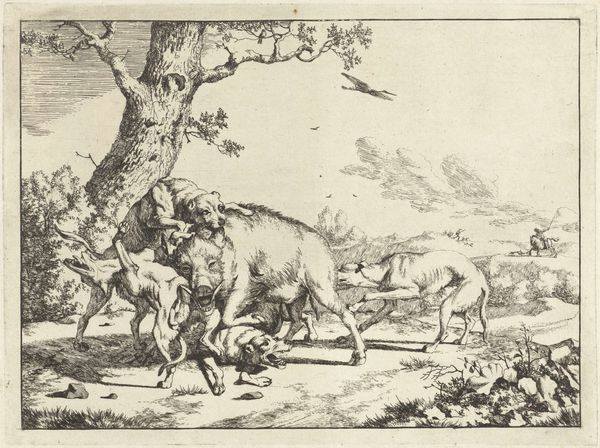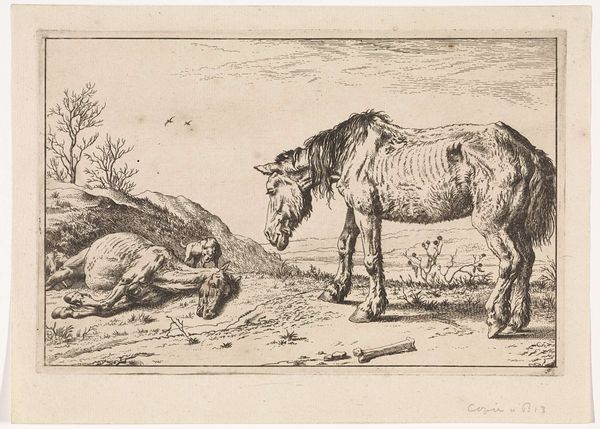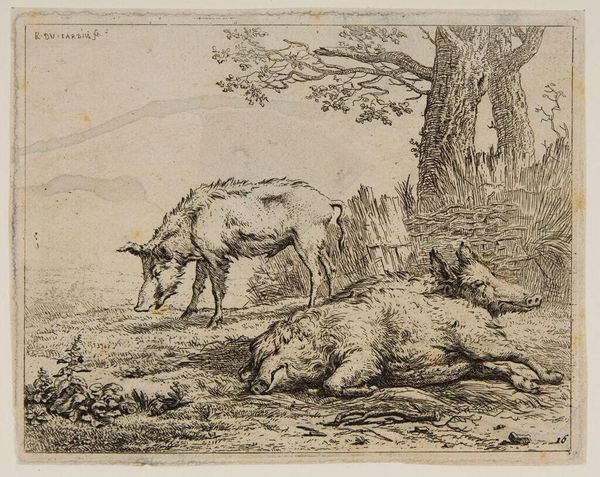
print, etching, engraving
#
baroque
#
animal
# print
#
etching
#
figuration
#
line
#
genre-painting
#
engraving
#
realism
Dimensions: height 111 mm, width 134 mm
Copyright: Rijks Museum: Open Domain
Curator: Welcome. Before us is “Fighting Dogs,” or “Vechtende honden” as it's known in Dutch, an etching and engraving likely created between 1657 and 1707. Its maker remains anonymous. What's your first impression? Editor: Chaos! Raw energy, primarily. Look at those lines! The artist really captured a sense of unrestrained canine aggression. There's a coarseness to the rendering; it's almost like feeling the texture of the dogs’ wiry fur under my fingers. Curator: The realism, combined with that almost brutal energy, definitely sets this piece apart. Considering the era, one wonders about the social context. Dog fighting, while perhaps not as formalized as later, still held a place in certain social circles, hinting at themes of competition, dominance and social hierarchies playing out through animal combat. Editor: And I'm immediately drawn to the question of the printing process itself. These kinds of prints were quite democratic—allowing a broader audience to engage with imagery that might have otherwise remained exclusive to painted commissions or private collections. The lines, seemingly simple, betray considerable skill in transferring an image onto a plate to mass produce it later on paper. What paper did they use, what inks, how worn was the metal? Curator: Exactly, it became accessible through distribution of such prints! It offered a commentary that reached the wider populace, thereby playing a vital public role as cultural record. This speaks volumes about the democratizing power of printmaking. One sees art not only in grand paintings, but in everyday observations replicated for the masses. Editor: Absolutely, we're talking labor here. The engraver, the printer, their workshops… it creates a whole economic and social ecosystem around producing images. To appreciate the print fully, one has to envision this whole chain of material production, from raw materials to distributed image, and thus, this type of art truly brings it home. Curator: The distribution highlights art's pervasive influence on social norms, behaviors and class. This seemingly minor piece offers an incisive view of a specific period and provides rich insight for anyone open to its societal implication. Editor: Agreed, beyond a depiction of fighting dogs, it encourages a tangible engagement with both the artwork and the historical production itself. I find this to be deeply fascinating, because its implications keep rippling outward.
Comments
No comments
Be the first to comment and join the conversation on the ultimate creative platform.

